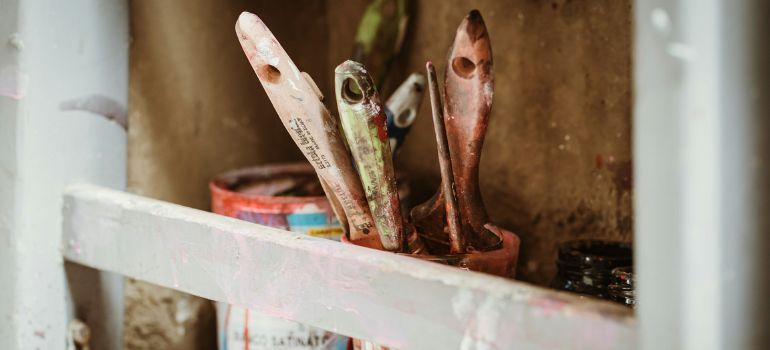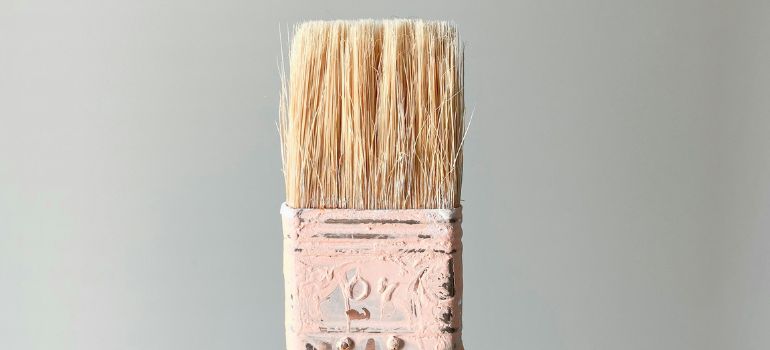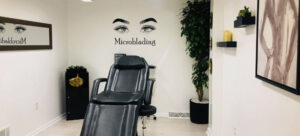Introduction
Kilz primer is a popular choice for preparing various surfaces before painting. However, if you don’t clean your brush properly after using Kilz, it can lead to stiff and unusable brushes. Let’s dive into the steps to clean Kilz primer off a brush effectively.
Gather Your Supplies
Before you start cleaning, make sure you have the following supplies ready:
- The Kilz primer-covered brush
- Paint brush cleaner or dish soap or vinegar or denatured alcohol
- A container or jar for soaking
- Warm water
- Paper towels or old rags
- A comb or brush comb
- Latex or disposable gloves (optional)
The Initial Rinse
Begin by rinsing the Kilz primer-covered brush under warm, running water. Use your fingers or a comb to remove any excess primer from the bristles. This initial rinse helps in removing the top layer of primer, making the cleaning process more manageable.
Soaking the Brush
Fill a container or jar with warm water and choose one of the following methods to soak the brush:
Method 1: Using a Paint Brush Cleaner
- Pour a small amount of paint brush cleaner into the container.
- Submerge the brush in the solution, ensuring that the bristles are completely covered.
- Follow the product’s instructions for soaking time (usually 15-30 minutes).
Method 2: Dish Soap and Water
- Add a few drops of dish soap to the warm water in the container.
- Place the brush in the soapy water, ensuring it’s fully immersed.
- Allow it to soak for 15-30 minutes.
Method 3: Vinegar and Water
- Mix equal parts of white vinegar and warm water in the container.
- Submerge the brush in the vinegar solution.
- Let it soak for 15-30 minutes.
Method 4: Using Denatured Alcohol
- Pour a small amount of denatured alcohol into a container.
- Place the brush in the alcohol, ensuring it’s fully covered.
- Soak for 15-30 minutes.
Brush Cleaning Techniques
After soaking, it’s time to clean the brush. Depending on the method you chose, follow these steps:
Method 1: Using a Paint Brush Cleaner

- Remove the brush from the cleaner and rinse it under warm water.
- Use a brush comb or your fingers to remove any remaining Kilz primer.
- Repeat the process until the water runs clear, indicating the primer is removed completely.
Method 2: Dish Soap and Water
- Remove the brush from the soapy water and rinse it under warm water.
- Gently massage the bristles with your fingers to remove any remaining primer.
- Continue rinsing until the water is clear.
Method 3: Vinegar and Water
- Take the brush out of the vinegar solution and rinse it under warm water.
- Use your fingers to work out the Kilz primer from the bristles.
- Rinse until the water runs clear.
Method 4: Using Denatured Alcohol
- Remove the brush from the denatured alcohol and rinse it under warm water.
- Gently massage the bristles to dislodge the Kilz primer.
- Rinse thoroughly until the water is clear.
Final Rinse and Inspection
After using any of the cleaning methods, give the brush one final rinse under warm water. Inspect the bristles closely to ensure all traces of Kilz primer are gone. If there are still stubborn spots, repeat the cleaning process.
Drying the Brush
Shake off excess water from the brush and gently reshape the bristles. Lay the brush flat on a clean towel or paper towels to air dry. Avoid using a hairdryer or heat source as it can damage the bristles.
Maintaining Your Brushes
To ensure your brushes last longer, clean them immediately after use, and don’t let paint or primer dry on the bristles. Store them properly in a cool, dry place.
Additional Tips for Brush Maintenance
While we have covered the essential steps for cleaning Kilz primer off a brush, here are some additional tips to ensure your brushes remain in excellent condition:
- Regular Cleaning: Make it a habit to clean your brushes immediately after each use. This prevents the primer or paint from drying on the bristles, making the cleaning process more manageable.
- Avoid Harsh Chemicals: While some cleaning solutions can be effective, avoid using harsh chemicals that can damage the bristles or the brush handle. Stick to the methods mentioned in this article for safe cleaning.
- Brush Comb: A brush comb is a handy tool for removing dried paint or primer from the bristles. It helps maintain the shape and flexibility of the brush.
- Avoid Soaking for Too Long: While soaking is essential, avoid leaving your brushes in the cleaning solution for an extended period. It can weaken the bristles over time.
- Store Properly: Store your clean brushes in a cool, dry place, ideally hanging them with the bristles facing down. This prevents damage and deformation of the bristles.
- Use Mild Soap: If you’re using dish soap for cleaning, opt for a mild, gentle soap. Harsh detergents can strip the natural oils from natural bristle brushes.
- Invest in Quality Brushes: Quality brushes tend to last longer and are easier to clean. Invest in good brushes for better results in your painting projects.
Troubleshooting Common Issues
Here are some solutions for common issues you might encounter while cleaning Kilz primer off a brush:
- Stiff Bristles: If your brush bristles become stiff after cleaning, try using a conditioner specifically designed for paintbrushes. It can help soften and restore the bristles’ flexibility.
- Stubborn Primer Residue: For stubborn primer residue, you can use a toothbrush or a small brush to gently scrub the affected areas while the brush is still soaking in the cleaning solution.
- Brush Discoloration: If your brush has discolored due to the primer, you can try soaking it in a mixture of water and baking soda. This can help remove stains and restore the brush’s original color.
Conclusion
Cleaning Kilz primer off a brush might require a bit of effort, but it’s essential for maintaining the quality of your painting tools. By following the steps outlined in this guide, you can keep your brushes in excellent condition for future projects.
Frequently Asked Questions
Yes, these methods are suitable for both synthetic and natural bristle brushes. However, be gentle with natural bristle brushes to avoid damaging them.
Wearing gloves is optional, but it can help protect your hands from chemicals in some cleaning solutions.
It’s best to use fresh cleaning solution for each cleaning session to ensure effectiveness.
Clean your brushes immediately after each use to prevent paint or primer from drying on them.
While these methods are primarily designed for brushes, you can use a similar approach for cleaning paint rollers. However, rollers may require additional care due to their larger size.



